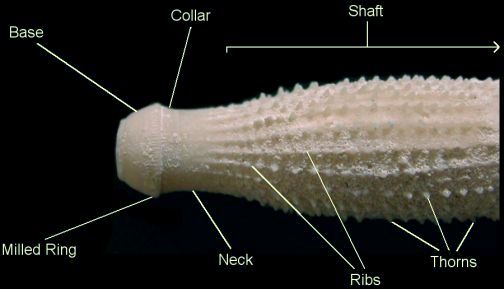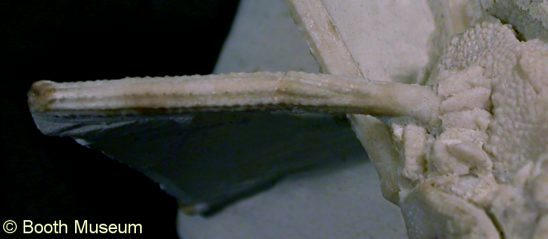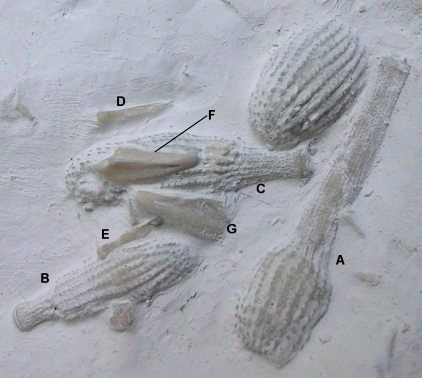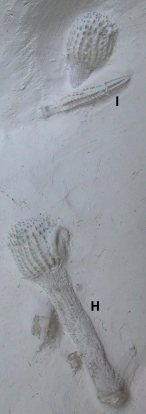
|
PRIMARY SPINE MORPHOLOGY |

1). The primary spines of regular echinoids are mounted on the primary tubercles of the test. The proximal (attached) end of the primary spine articulates with the primary tubercle in a ball-and-socket fashion (example), whilst the distal end projects outwards from the test. (Phalocrocidaris merceyi, Turonian, Washington, x3).

2). The proximal end of the primary spine is divided into a base, milled ring, collar and neck. The main body of the spine is termed the shaft. Longitudinal ribs commonly run the length of the shaft, often ornamented by rows of thorns. (Temnocidaris sceptrifera sceptrifera, x5).
3). (A) Composite specimen of Tylocidaris clavigera (x4) showing how its club-like primary spines articulate in a ball-and-socket fashion with the primary tubercles. (B) Live example of a regular echinoid displaying a full compliment of primary spines (from the pages of Discovering Fossils).

4). Detail of a beautifully preserved specimen of Phalacrocidaris serrifera. The primary spine articulates with the primary tubercle, and the junction between the two is protected by a ring of scrobicular spines (x5).
 I
I
 II
II
5). The morphology of the primary spines varies with their life-position on the test. For example, the primary spines shown above all originated from a single individual of Tylocidaris clavigera. Large club-shaped spines with elongate 'handles' (A, H) were positioned on the adapical surface, whilst those with shorter 'handles' (B, C) were close to the ambitus. Primary spines of the adoral surface (D, E, I) were rod-like and highly reduced. F and G are hemi-pyramids from the Aristotle's Lantern ( I x5.2, II x2.6).